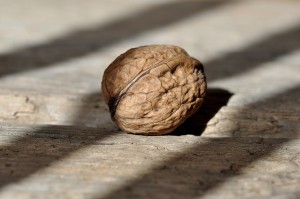Pain- something that no one wants to experience even once let alone daily and yet chronic pain is not uncommon. The Chronic Pain Association estimates that 50 million Americans endure  chronic pain on a daily basis. Whether you suffer from Fibromyalgia Arthritis, or a Sports Injury, pain from the inflammatory response finds us and can make life miserable. Taking anti-inflammatory medications is the first defense against chronic or acute pain. Research shows if you want to add even more relief to your pain symptoms you can make some small changes to your diet.
chronic pain on a daily basis. Whether you suffer from Fibromyalgia Arthritis, or a Sports Injury, pain from the inflammatory response finds us and can make life miserable. Taking anti-inflammatory medications is the first defense against chronic or acute pain. Research shows if you want to add even more relief to your pain symptoms you can make some small changes to your diet.
Foods That Help Ease Pain
Foods that have the greatest effect on the inflammatory process are fats. The predominant omega-6 fatty acids present in the American diet tend to promote inflammation while omega-3 fatty acids help to inhibit the inflammatory process. The omega 6 to omega-3 ratio in the Western diet is a high 16:1.8 leading some researchers to say the typical Western diet is a pro-inflammatory diet. No wonder we are in such pain! Even though omega-6 fatty acids are good for us and needed in the diet, we are eating far too many of them and not eating enough of the health-promoting omega-3’s. Omega-6 fatty acids are found in beef, pork, chicken, whole milk dairy products, egg yolks, vegetable and seed oils, and packaged convenience foods- all staples of the American diet. The pain reducing Omega-3 fatty acids are found in cold water fish (salmon, mackerel, halibut, and tuna), ground flax seeds, canola oil, and walnuts.
There is one more fatty acid to throw into the mix and that is omega-9. Not as much of an attention getting fatty acid but just as important to know about. These fatty acids are also involved in prohibiting the inflammation process bringing relief to its sufferers. Omega-9’s are found in olive oil, avocados, pecans, almonds, peanuts, cashews, sesame oil, pistachio nuts and macadamia nuts. All those nuts you thought were off limits, not anymore. Just make sure you only eat 10 – 12 nuts for a serving size so you don’t add to your waistline with these high calorie snacks.
Fruits and Vegetables- ah, here they are again. I wonder how long it will take us to realize they really are good for us. The antioxidants found in fruits and vegetables play a role in decreasing damage by free radicals which to you and I means it prevents the initiation of the inflammatory response nipping it in the bud. What’s the recommendation? The same as it’s always been, 5-8 servings of fruits and vegetables each day. It’s not as tough as it seems. A serving size of fruit is the size of a tangerine or half of a banana while the serving size for vegetables is ½ cup cooked and 1 cup raw. Add some berries to your cereal, some vegetable soup with lunch or sneak veggies into your scrambled eggs, add them wherever you can.
Although this doesn’t count as a legitimate study, my mother, a long time arthritis sufferer decided to put some of these ideas into practice. She decided to take 2 tbsp. of ground flax seeds per day which she added to her oatmeal in the morning. She also added almonds regularly. That was it. No other changes and she found her arthritis pain markedly decreased. It goes to show that small nutrition changes can make a big impact on your health.
Now that you know the information, let’s get practical. Here are 8 small diet changes you can make starting this week to decrease inflammation.
1. Replace chicken, pork or ground beef with salmon, mackerel, or halibut 2 times each week.
2. Use canola or olive oil in place of other vegetable oils for salad dressings and cooking.
3. Add walnuts, almonds, or pecans to salads.
4. Snack on an ounce of cashews or macadamia nuts with a piece of fruit.
5. Use sliced avocado in your sandwich in place of the cheese.
6. Use omega-3 fortified eggs (can find at all local grocery stores: look for the sentence: fed with DHA and EHA).
7. Add 2 tbsp of ground flax seeds to your oatmeal or yogurt.
8. Add a side salad each night with dinner (filling up with veggies during your meals will also help with weight management).
Using medications alone to manage your pain is difficult because most drugs eventually lose their effectiveness and can cause side effects. Take some small steps to add these dietary practices so you can have a more complete support system to alleviate pain.
© 2005, Meri Raffetto
PS: Click here for information on a natural pain relief solution.